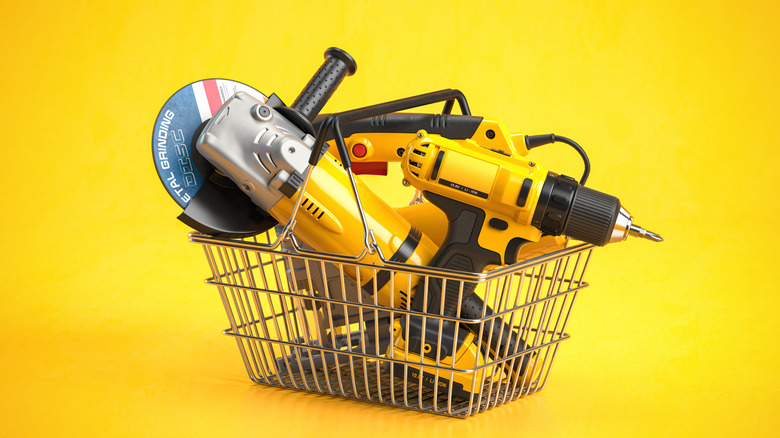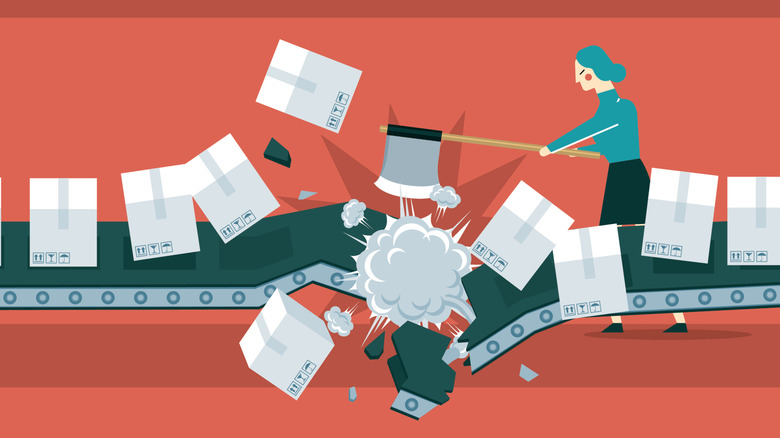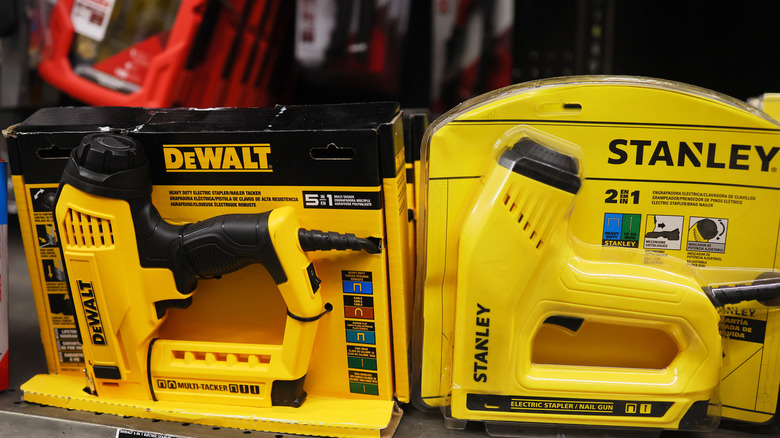Are Tool Prices Increasing In America? Here's What You Need To Know
When President Trump announced his "Liberation Day" tariffs, the American public's first question was whether they would make products more expensive. Most believed they would, with an April 2025 Gallup poll showing that 89% of Americans thought that the measure would raise the price of goods for consumers. For some companies, the tariffs could mean billions in losses. For instance, GM announced it could take a $5 billion hit from the policy. Many have also pointed out that the burden of these tariffs would ultimately land on the consumer. One industry where this is the case is hand and power tools, where several big names in power tools have announced price increases, including Stanley Black & Decker, Illinois Tool Works, and Tekton. These price changes can be attributed to an industry flush with imports, making it particularly susceptible to tariffs.
Overall, the United States is the world's largest importer of hand and motor working tools, bringing in roughly $1.8 billion worth in 2023. China, which is one of the countries subject to tariffs, was the world's leading exporter in both categories, collectively exporting just over $4 billion of tools, $3.162 billion of which made its way to the American market. This is despite none of the world's ten largest manufacturers coming from mainland China, and five of the top eleven companies being American. And while price hikes aren't unique to the tool industry, the situation presents a fascinating look into how interconnected global supply chains make tariffs difficult for foreign and domestic manufacturers.
Reasons for rising prices
U.S. tariffs on raw materials and end products present a financial quagmire for tool manufacturers with global supply chains, even for those with strong domestic manufacturing bases. The primary reason is the inevitable rise of raw material and component costs. Power tools are particularly susceptible to these price increases due to their use of lithium-ion batteries.
According to 2024 trade data, Chinese companies manufactured about 70% of America's lithium-ion battery supplies — a fact that has proved a point of concern for local manufacturers even before the tariffs, as taxes on Chinese-made lithium battery cells were set to escalate to 25% by 2026. Companies looking to manufacture their batteries domestically will likely be squeezed by increased costs as well, as China produces over 80% of the world's battery cathodes and anodes, which are the two major battery components.
Material costs are also a major concern for the hand tool market. In particular, prices for steel and aluminum, materials favored by tool producers, are predicted to rise by 8.2% and 5.7%, respectively. This comes as the administration placed a 25% tariff on steel and aluminum imports in February, a move predicted to affect $150 billion of products. The U.S., for its part, imports roughly a quarter of its steel and aluminum. And while the administration clarified that Canada, the country's largest trade partner in both sectors, and Mexico would receive an exemption as part of the USMCA trade agreement, material imports from countries like Brazil, South Korea, Vietnam, the U.A.E., and China will undoubtedly increase supply costs for tool manufacturers.
Stanley Black & Decker: a case study
Let's look at Stanley Black & Decker, the world's fourth-largest tool manufacturer, which owns brands like Craftsman, DeWalt, Stanley, and Black & Decker. Despite having 30 American factories, company executives expect the tariffs to cost them nearly $100 million annually. Stanley imports $1 billion of Chinese-manufactured goods yearly, accounting for roughly 15% of the company's American market. According to its CEO, Donald Allan Jr., the company will respond by shifting its production to other parts of Asia and Mexico, escalating a trend that has seen the American manufacturer more than halve its Chinese exports to the U.S. over the past decade. According to Allan, increasing the company's American production is cost-prohibitive.
While shifting production to Mexico could ease tariff costs due to exemptions for USMCA-compliant goods, it isn't a catch-all solution. While 20% of Stanley Black & Decker's manufacturing is in Mexico, only a third of its Mexican-made products meet the USMCA's regional value content requirements — presumably because many of their components or materials are imported. This is an important consideration for manufacturers looking to avoid tariffs: how much hidden exposure they have through their products' imported components. This is particularly pertinent for China-focused tariffs, as 47% of China's global exports in 2023 were these intermediate goods. Ironically, even manufacturers looking to produce components in America face tariff-related pressure through the machines that assemble them, as China accounts for 17% of U.S. machine imports, totaling $869 billion in 2024.
So, how will manufacturers adjust to rising production prices? For Stanley, Black & Decker, the short-term answer is higher prices. Unfortunately for consumers, other tool manufacturers, like Illinois Tool Works, Lincoln Electric, and Tekton, have come to a similar conclusion.


